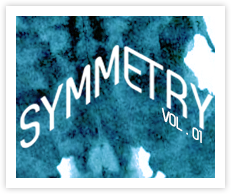

Occupy Wall Street: A Lesson in Two-way Communication
Josh-Robin Young // October 12, 2011

The protests are spreading, and the movement is growing. Whether you agree, disagree, or remain indifferent to the Occupy Wall Street movement, there is no arguing that it is becoming very hard to ignore. What began as a few dozen demonstrators setting up camp in front of the New York Stock Exchange has turned into a full-blown international movement, sweeping across cities in the U.S., Canada and Europe. Occupy Wall Street proclaims itself a “…leaderless resistance movement with people of many colors, genders and political persuasions.” The protestors state that they represent “the 99 per cent”, meaning that they are not included in the one percent of citizens who control over one quarter of the wealth.
But what are these protesters demanding?
“Nobody knows what they want. They can’t even name the names of the firms that they’re protesting against,” states CBC commentator Kevin O’Leary. This reaction is not surprising considering the vast array of issues causing malcontent among the protest’s diverse membership. The issues identified by the demonstrators include: corporate greed, environmental degradation, and political corruption. However, they do have one evident cohesive goal: they want change, and they want it now.
How does this movement correlate with public relations? It ties in closely with one of the most basic theories of PR, a theory most public relations students are taught as soon as they enter the program: Dr. James Grunig’s two-way symmetrical model of communication.
A two-way communication model “…attempts to balance the interests of the organization and its publics. It is based on research, and it uses communication to manage conflict with strategic publics.” In other words, it is a system where an organization listens to its publics and takes into account their input while making decisions, managing conflicts, and dealing with crises.
Two-way symmetrical communication attempts to uphold the democratic principles of freedom of the press, freedom of speech, and responsible government; it is therefore an important tool in our democratic system. If two-way communication fails, so too fails democracy.
There are very few outlets the average person can use to communicate with politicians, a reality which can be problematic. In an election, one can vote for roughly three candidates, yet has very little input in the political process. Granted, there are opinion polls which politicians, for the most part, pay attention to. However, as any good PR professional knows, polls and surveys give very limited information, and cannot always be relied upon. The voter turnout has dipped below 60 per cent in both Canada and the U.S., demonstrating that disinterest exists due to lack of open communication. So what can the average person do to communicate with their local politician? They can send a letter to parliament, appear on the local news, or maybe, just maybe, they could join a protest.
The Occupy Wall Street movement is a way for ‘the 99 per cent’ to send a strong message to the government that there must be change. An open-system organization does not ignore negative feedback about their products, they find out what is wrong and fix it. The government’s publics are trying to communicate with them and it is their responsibility to listen. This should be seen as an opportunity to get feedback directly from the source, not “just your basic green, anti-capitalist, anti-bank, anti-Wall Street, anti-America demonstration” as MSNBC’s commentator Larry Cudlow has suggested.
It is understood that Occupy Wall Street does not necessarily represent the views of all citizens, or even most (despite the “We are the 99 per cent” slogan). Yet, whether Occupy Wall Street represents the views of 10 per cent of the population or 80 per cent, the message still has considerable weight.
It should be taken into account that the government cannot and should not blindly make decisions based on the demands of protesters. However, at this point, policy makers do not seem to be listening at all.
And, any good PR professional knows the fate of an organization that does not listen to its publics, don’t they?
References
Bambury, B. (2011, Oct. 8). Can the Occupy Wall Streeters set up camp in Canada. CBC. Retrieved from http://www.cbc.ca/news/canada/story/2011/10/08/f-vp-bambury-wall-street.html
CBC News. (2011, Oct. 6). Occupy Wall Street Protest Grows. CBC. Retrieved from http://www.cbc.ca/news/business/story/2011/10/06/occupy-wall-street-protest-thursday.html
Erlbaum, L. (2006). Public Relations Theory II [Review of the book Public Relations Theory II]. EducationPR. Retrieved from http://educationpr.org/2007/01/12/public-relations-theory-ii/
FederalJacktube6. (2011, May 4). MEDIA FAIL: MSNBC’s Kudlow Calls Occupy Wall St “A Puzzling & Bizarre Protest”. Retrieved from http://www.youtube.com/watch?v=7JhHi4rgeoY
